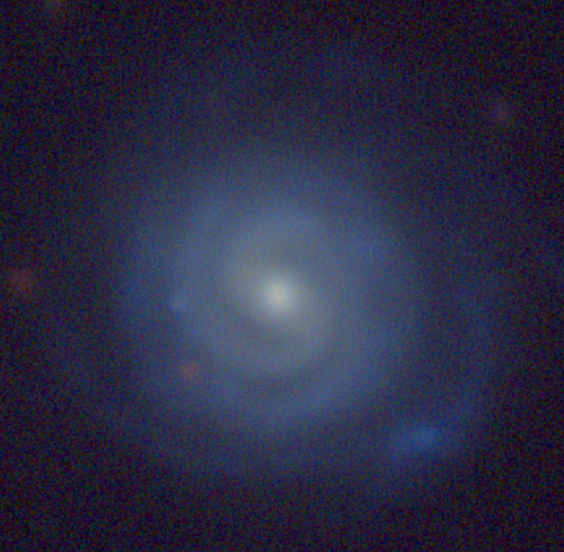
One example of a Milky Way-like galaxy known as SDSS J083909.27+450747.7. Image credit: Brittany McDonald (McMaster University), Armin Rest (Space Telescope Science Institute), and Jeffrey Newman.
A new study on the color of our Galaxy by Prof. Jeffrey Newman of University of Pittsburgh and Timothy Licquia, a PhD student, was presented at the 219th meeting of the American Astronomical Society in January 2012. The team used data from the Sloan Digital Sky Survey (SDSS) to find galaxies similar to the Milky Way in terms of number of stars and rate of star formation. Comparing these characteristics to the observable colors of the respective galaxies allowed researchers to calculate the expected color of our Galaxy, as it would appear from the outside.
Newman’s poetic and more objective descriptions of the expected average color of our Milky Way are as follows:
“fine-grained new spring snow seen in the early morning light, about an hour after dawn”
“D48.4 standard illuminant (i.e., a color temperature of 4840 K)”
“a light bulb with a color temperature of 4700-5000K and color rendering index (CRI) above 90 would be a good approximation”
Newman made an interesting point that the SDSS Telescope at the Apache Point Observatory, New Mexico, despite its small size of 2.5 meters, has been “one of the most scientifically productive in history.”

Images of 25 Milky Way analog galaxies found by Licquia and Newman. Image Credit: SDSS
